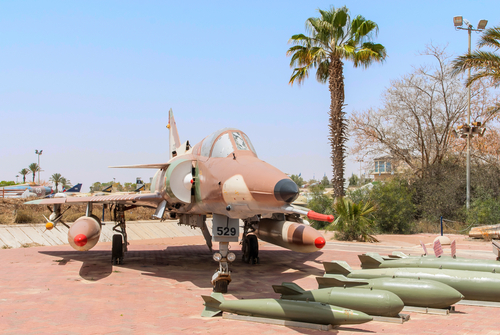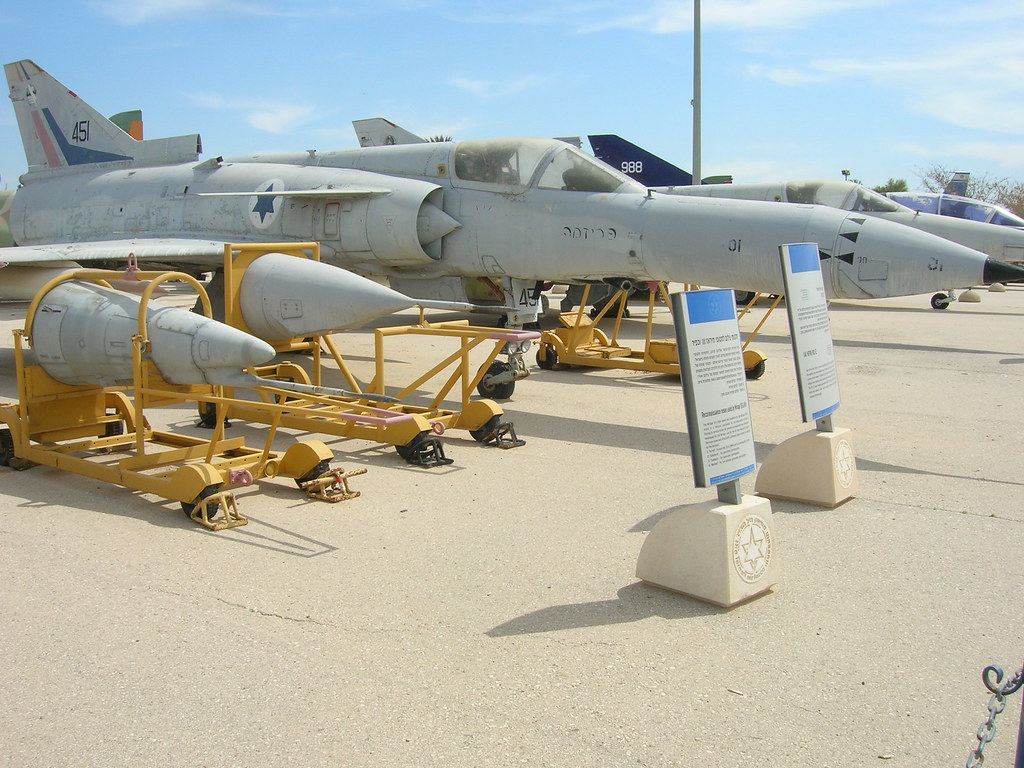
The Israeli Air Force’s Kfir combat aircraft, born out of necessity and ingenuity, emerged as a successor to the French-designed Dassault Mirage 5.

Born from the crucible of the Six-Day War and the Yom Kippur War, the Israeli Air Force (IAF) heralded a new era in aerial combat with the Kfir, a fighter jet designed to counter advanced Soviet-designed aircraft wielded by surrounding adversaries.

Boasting a top speed of 1,520 mph, a combat range of 477 miles, and a service ceiling of 58,010 feet, the Kfir was equipped with Rafael-designed cannons and an array of missiles, earning it a reputation as a formidable “bomb truck.”

The Kfir’s journey began with the French-designed Dassault Mirage 5, a platform Israel heavily relied on until an arms embargo left the nation without the 50 Mirage 5J fighters it had already paid for.

Resourcefulness led Israeli engineers to create the Nesher, an unlicensed copy of the Mirage 5.

The Kfir emerged as an advanced variant of the Nesher.

In the quest for a high-performance jet, the Israeli Air Force considered integrating two distinct engines into the revamped Kfir airframe – the General Electric J79 turbojet and the Rolls-Royce Spey turbofan.

Given that the United States had already authorized Israel to manufacture the J79 engine for the Douglas F-4 Phantom II, the IAF opted for this powerplant.

The J79 offered greater thrust and afterburning capabilities compared to the original French Atar 09 engine that powered the Mirage.

It was a significant improvement over the Mirage’s original powerplant.

Upon entering service in the mid-1970s, the Kfir played a prominent role in the Israeli Air Force.

Nevertheless, the arrival of American-made F-15 Eagles soon eclipsed its position.

Despite being overshadowed by newer fighters, the Kfir saw action in Lebanon during the 1980s and has since been utilized by various foreign militaries, demonstrating Israel’s unwavering commitment to aircraft innovation.

However, its story does not end with the IAF’s phased retirement of the fleet in the late 1990s.

Several foreign militaries, including those of Ecuador, Sri Lanka, and Colombia, continued to operate the Israeli platform.
Relevant articles:
– Kfir: Israel’s Air Force Had 1 Fighter Plane No Country Wanted to Battle, The National Interest
– Historic Aircraft – Stars of David and Red Stars, U.S. Naval Institute
– Colombia breaks diplomatic ties with Israel but its military relies on key Israeli-built equipment, ABC News – Breaking News, Latest News and Videos
– The Israeli Air Force (IAF) in the War of Independence, World Machal
